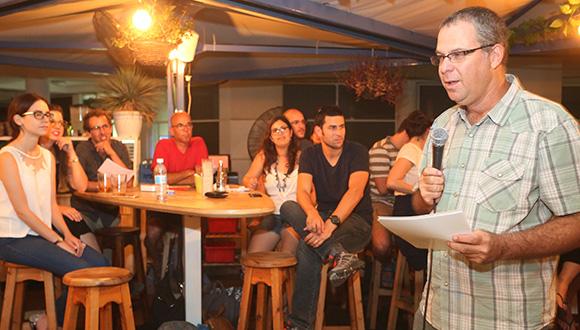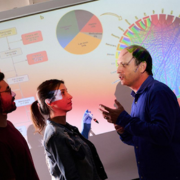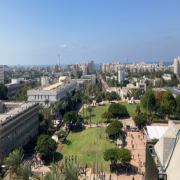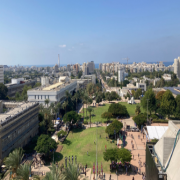Digging into Jerusalem
How many empires have ruled Jerusalem? We asked archaeologists on the city's special day
Jerusalem is one of the few cities in the world to have its own national holiday, celebrated on May 24th. Over the last 5,000 years the city has certainly seen its share of colorful history, so in honor of Jerusalem Day we decided to ask the Department of Archeology and Ancient Near East Cultures about archeological digs in the Jerusalem, and why the city has fascinated so many for so long. Naama Walzer and Alon Arad, both Master's students at the department, took on the challenge.
One city, a world of research
Jerusalem's history is as diverse as its population. Thousands of years of continuous settlement have meant the city is made up of layers upon layers of civilization. Archeological exploration of Jerusalem began in the 19th century, and hasn't stopped since. And while researchers now know more than ever about the city's past, many questions remain unanswered.
While many know about the Biblical history of Jerusalem, its more ancient past is often overlooked. According to findings from the Mount of Olives and the Valley of Rephaim, Jerusalem has actually been inhabited since the Paleolithic era, which began over two million years ago.
Capital of a kingdom or a small country?
Jerusalem's status during Biblical times is a contested issue. It's mentioned in the Al Amarna letters, which were found in Egypt and are dated from the late Bronze period, towards the end of 2,000 BCE. This allows us to know that during this period Jerusalem was a city-state, like other city-states in Canaan that were under Egyptian patronage. From this point on, however, there are disagreements about the city's status. Was it the capital of a large, united kingdom? Maybe, and maybe not. What's certain is that by the 7th century BCE writers and editors were sitting together in Jerusalem, creating long, complicated texts that are included in what we know today as the Bible.
But even after Biblical times, Jerusalem continued to be a local focal point. Findings from the Hellenistic and Maccabees period continue to pop up. A good example of this is the Acra fortress, which was only discovered recently. In 2015, after a lengthy search, archeologists found a massive fortified wall, leftovers of other defensive structures, dozens of coins that were used to date the fortress' existence, arrowheads made of bronze and other items that were typical of the Selecuid military.
The days of the Roman Empire's rule in the region also had a great impact on Jerusalem. During those days the Second Temple was built, and a new religion began to solidify, which in time would become the most dominant religious force in the world – Christianity. Eventually the Second Temple was destroyed, and a series of rebellions led to exile, and a ban on Jews entering the city. The city's name was also changed to Aelia Capitolina and the province was renamed to Syria Palestina.
Over time, the Roman Empire and its heir in our region, the Byzantine Empire, were done affecting the city, and the Muslim conquest took their place. Conflict between dynasties, people and religions ensured that between the 7th and 15th centuries the city changed many hands, and each ruler wanted to leave their mark on it. One of the most prominent examples of this is the Dome of the Rock, one of Jerusalem's most notorious monuments, completed at the end of the 7th century. However, in the 15th century the Ottoman Empire conquered the city, and held onto it until the 20th.
All these changes have left their traces in Jerusalem, whether above the ground or below. They've made Jerusalem a unique place, with a rich heritage, which is embodied not only in the diversity of its modern inhabitants but in the richness of the academic research it's helped produce.
You drink, archeologists talk
If we managed to pique your interest, you're welcome to join us in Tel Aviv on May 24th to hear more about Jerusalem's past from TAU archeologists. The event will take place at "Hanasih" bar, Nahlat Binyamin 18.







